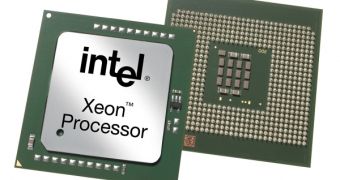Workstation vendor NextComputing has just integrated Intel's low wattage L5420 Xeon 45-nanometer quad core chips into its NextDimension "flextop" lineup.
"The Intel Xeon processor 5400 series helps enable NextComputing to provide a unique form factor in the high-performance workstation market," said Boyd Davis, General Manager, Intel Server Platforms Group Marketing.
Intel's newly-introduced Xeon processors in the L5400 family are extremely energy-efficient and claim performance gains of up to 25 percent over the previous generations of Xeon chips. The new quad-core processors come with a default clock speed of 2.3 GHz for the L5410 parts and 2.5 GHz for the more powerful L5420 chips. Both processors feature the same basic specifications, except for the frequency clock, and fit into a 50-watt thermal envelope.
"Their innovation takes advantage of Intel's 45nm High-K silicon processor technology, coupled with second-generation PCI Express, faster buses, and smarter memory, and provides end users across a number of vertical industries an opportunity to solve the most complex visual computing challenges," Davis continued.
The company is ready to ship dual-processor configurations in its NextDimension Pro and Pro HD, NextDimension Evo and Evo HD, and Vigor Pro SD offerings, which maximize the computing performance and dramatically decrease the electricity costs for professionals in digital media, test and measurement, oil, and even in military intelligence.
"Our users are beginning to harness the capability of these new workstations with 2 processors and 8 computational cores by employing parallel workflows to compress the time between an idea and a product," stated Bob Labadini, President and CTO at NextComputing.
With 12 MB of on-die L2 cache, Intel's 5400 series chips offer extended performance in graphics, video encoding and processing, 3D imaging, application servers, data mining, as well as in any other fields where processor-intensive applications are used.

 14 DAY TRIAL //
14 DAY TRIAL //